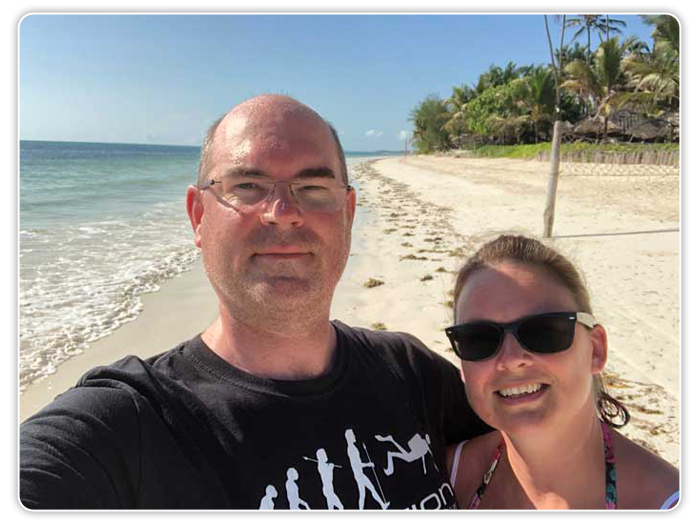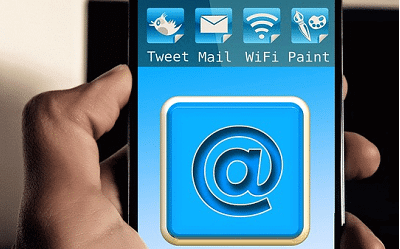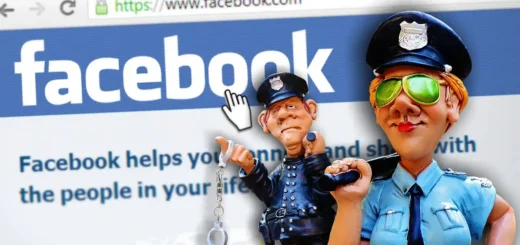How to Make Your Testimonials Readable and Believable
Let’s compare two sets of testimonials
The first set is from an Amazon product with a hundred reviews. Some of these reviewers LOVE LOVE LOVE the product, and others aren’t so pleased. Maybe a few of them even HATE it.
As a consumer you already know that no product is going to please all the people all of the time. That’s why those negative reviews balance out the positive reviews and make them all more credible.
What happens when you chance upon a book on Amazon that has a hundred reviews that all say the book is the GREATEST THING EVER? If you’re like me, you figure these reviews came from the ardent readers of a blogger or niche celebrity, and this author could probably have published his grocery list and his fans would have said nice things.
Now think back to the last time you saw a sales letter for an online marketing product with the big flashy splashy sales page and the reviews that all say this is the GREATEST PRODUCT EVER Devised in the HISTORY of the WORLD.
Did you believe these testimonials? If you’re like me, you don’t even read them or watch them, because what’s the point? They’re most likely affiliates who are trying to make sales. Nothing wrong with that, but to the average buyer they simply aren’t believable.
By now you’ve no doubt guessed what it takes to make a review believable, haven’t you?
That’s right – stir in some negative with the positive. And don’t hide the negative, either. Instead, put it right up front where people can immediately see it.
“I instantly regretted buying this product because the darn thing is 31 videos long and I didn’t want to invest the time to watch them all. But I devoted three mornings to watching and taking notes. I implemented 4 key points and 3 new strategies that I learned, all explained in step-by-step detail and all things I’ve never heard of before. And because of that, I earned an extra $1,000 this month and I’ll be making an extra $2500 every month from here on out. Was it worth it to watch 31 videos? Hell yes it was.”
“I was so sick and tired of hearing about this golfing guru and how he could take 10 strokes off of anyone’s game in 4 weeks that I finally bought his program to prove he was a shyster, and this was all a big con. It’s now 4 weeks later and I’ve shaved 12 strokes off my game and I’m happy to admit that eating my own words has never tasted so good.”
You can see, read and feel the difference between these testimonials and your standard, “THIS IS THE GREAST PRODUCT EVER” testimonials that everyone is used to ignoring. Prospects will actually READ reviews that start out negative and those same prospects are 1001% more likely to believe them, too.*
*I made that number up. Your results may vary. ?
Notice, too, that these testimonials read like little stories. “I thought this. I did that. Here’s what happened next.”
If there is a preferred testimonial formula, it looks something like this:
1: Negative beginning
- This product was so intensive it nearly drove me crazy.
- I never in a million years believed a course could help me find love.
- I knew this was just another B.S. eat less and exercise more course that would make me feel bad about myself when I didn’t lose any weight.
2: Here’s what I did
- I took the easy route and paid the product creator to do it for me.
- I took the course anyway and followed every step exactly as instructed just to prove the course creator wrong.
- I knew that something had to change or I was going to die, so I took the course on the chance it might finally make the difference in my health I was looking for.
3: Here’s what happened
- I make a gazillion more dollars now than before.
- In less than six months I found the love of my life and we were married a year later.
- I lost 122 pounds, I’m no longer having heart issues and I ran my first marathon last week.
How to Get Testimonials
First, here’s how to NOT get them… don’t wait for them to come in all by themselves, because they almost never will.
And don’t wait days, weeks or months to ask for them, either. Waiting gives the customer time to forget details. They might not remember how bad things were prior to your product, why they bought it in the first place and the results they got.
Finally, don’t simply say, “Hey George, could you give me a testimonial?” George won’t know what to write. He’ll either procrastinate, hoping you’ll either forget or the words will magically come to him if he just puts it off for a while. Or he’ll write something that is super sugary sweet and non-believable, or something that is non-inspiring and even just plain boring.
Here’s What to Do Instead
Ask them specific questions that will allow you to build the testimonial from their answers.
Question 1: What nearly prevented you from making this purchase?
Customers have objections, obstacles or just plain hesitation in buying almost anything. Maybe it was the money, the time commitment or the perception that the product wasn’t quite right for them.
Not only will asking this question give you the negative portion of your testimonial that you’re looking for; it will also provide you with insight into issues and customer objections you may not have considered before.
Question #2: Once you purchased the product, what did you discover that changed your perception of #1?
This is where you’re going to diffuse whatever objection the buyer had in the first place. This turns the picture around in your testimonial and it also cements the idea that the purchase was worth it to your customer.
Question #3: What one feature do you like best about this product and why?
Don’t ask for a laundry list here. You want to know about the ONE feature they love, and why they love it.
Question #4: What other benefits have you gotten from this product?
Now they can give you more input about the extra benefits they received in addition to the big one in #3. You may or may not use this in constructing the testimonial. And it could also happen that this question uncovers something even better or more intriguing than #3. If so, follow up on this for more details.
Question #5: Would you recommend this product, and why?
If they won’t recommend it, then you don’t have a testimonial. If they do recommend it, then that person is putting their own credibility at stake, deepening their own commitment to your product with their endorsement.
Question #6: What would you like to add?
This question is a real wild card. You’ve warmed them up with the previous questions, and now you’re giving them a chance to say anything they want. Sometimes they’ve already said it all, but other times you’ll get something that is surprising and hugely useful for constructing the testimonial.
There is something I would like to add here as well, and it is this: Pay close attention to what people say when answering these questions because financially it can benefit you in ways you might not immediately imagine.
Customers will tell you new ways to use your product, new areas to use it in, new benefits you haven’t thought of, and objections you need to handle with future customers. Occasionally you’ll realize you’re missing an entire market because you think your customers are using your product for one purpose when they’re actually using it in an entirely new way you haven’t even thought about.
You can create a simple survey online to ask these questions. Be sure to ask for their name and email address, too, as well as having them tick a box that says you can use their answers in your marketing.
And then once you have constructed their testimonial from their responses, it’s good to send it back to them to let them know how it reads, just in case anything in it differs from what they may have intended.
Creating the Testimonials
You are going to construct the testimonials from the responses you get from your customers to these six questions, and then you’ll get their permission to use the testimonial you create.
Here’s the key to making these testimonials into little converting machines:
Each testimonial is going to begin by addressing an objection the prospect might be having.
For example, if your product has a large price tag, then you’re going to have to overcome the prospect’s sticker shock before you can make the sale.
You might have a testimonial that begins with, “I thought $2000 was too much to pay for this, but…” or “At first I thought the financial investment was too much, but then…” Beginning a testimonial this way will catch the attention of anyone with a price objection.
Then you go on to address the price issue with how it’s a pittance compared with the benefits and so forth, as told by your customers.
Feel, Felt and Found
There is a formula in the sales industry called, “Feel, felt, found.” Essentially you say to the prospect, “I understand how you feel, many people have felt the same way. But what customers have found is that…”
You can certainly use the feel – felt – found formula in your sales copy. And done correctly it will be effective.
But using this in your testimonials can be twice as powerful because it’s coming from a customer rather than from you.
Now we come to the chicken and egg…
You might be wondering if you should make a list of objections you need to overcome and then find the testimonials to handle those, or if you should instead see what testimonials come in and then fit those to the objections.
The answer is to do both simultaneously if you can.
Obviously, you’re not going to tell your customers what to say, but there may be times when you can steer them in the direction you’d like them to go.
And if you have one particularly sticky objection that you can’t seem to get a testimonial for, then you can simply add a question to your list that directly addresses that objection.
For example, if you charge $3000 for coaching and none of your clients are mentioning price when they answer your questions, add a question asking about the investment, how they felt about it up front and did it turn out to be worth it.
Sooner or later, you’re going to get just the right testimonials to help diffuse the biggest objections customers have to purchasing your product.
Remember, testimonials aren’t for cheerleading and hype.
Nor are they there to make you look like Super Marketer and your product look like the next best thing to oxygen on the moon.
Rather, testimonials are for lowering your prospect’s defenses so that you can overcome their objections.
Don’t be afraid to start them off on a negative note, because those are the exact testimonials people will read, believe and respond to.
But HOW Do I Ask for a Testimonial?
We’ve covered what questions to ask your customer, how to position the testimonial to make it credible and convert your prospects into sales, but one thing we haven’t talked about yet is how you approach a customer to ask for that testimonial.
This is the part where a lot of marketers balk. They’re afraid to ask, don’t want to seem pushy or maybe they’re even embarrassed.
Look, you did a good job in delivering your product or service, right?
Your customers are better off now than before they made the purchase, right?
Then it’s time to let your customer return the favor by giving you a testimonial.
What many marketers don’t realize is that raving fans WANT to give testimonials. They just need to be asked.
It’s All About the Timing
Asking for a testimonial 6 months after they’ve used your product or service isn’t good because they’ve already forgotten a lot about why they purchased and what they gained from the product.
Asking for a testimonial before a customer is ready to give one isn’t good, either, because you will indeed look pushy.
How then, do you know it’s the right time to ask?
Here are a few ways to know:
1: When your customer says something positive in an email, on the phone or in any other communication.
This is a direct opening for you to follow up with your additional questions, which is why I recommend having these questions handy at all times.
And be sure to ask your list of buyers for testimonials, saying something like, “If you have a minute or two to spare, I would love to hear from you about the XYZ product.”
2: When they say something positive about your product in social media.
Monitor what people are saying about your product on social media, and when someone has a positive comment, get in touch with them right away, thank them and ask them to take your questionnaire.
And you don’t need to wait for people on social media to say something positive about your business because it’s totally okay to ask your customers for feedback.
You might say something like, “We love hearing from our fans! Head on over to our Facebook page to leave us a review.”
3: When They Make A Positive Post In Your Blog Comments
Watch your comments and when you find someone has left a glowing comment, get in touch with them and ask for a testimonial.
You can also close each blog post with something like, “Have any of our tips or products helped you? Let us know in the comments below.”
4: When You Ask Them If They’re Happy and They Say Yes.
You can ask them if they are happy with your product or service anytime, and I recommend asking it more than once if you get the opportunity. This is easier if you are selling something such as coaching where you are on live calls with your clients. But you can also ask them how they are doing with your product through email or any other line of communication you might have.
Let’s say that you sell a self-paced 12-week course. After each module you might ask them how they are doing, how is it going, what do they love and what changes would they like to see. When you get some glowing answers, get in touch and ask those six questions.
5: When They Visit Your Membership Site
You might want to add a pop-up notification to your paid membership sites. This way each time a subscriber logs in, a small, discreet pop-up will appear in the bottom of the screen asking them if they would like to leave feedback.
What if You Don’t Have Any Customers Yet?
If your product is brand new, then you might want to do something like a soft launch to just your own list or the list of a partner.
Explain that your product is new, why it’s different, and that you need beta testers. Let them know they get the product for super cheap or even for free, but only on the condition that they give their in-depth feedback on the product.
You can then use this feedback not only to create testimonials, but to also improve your product before you launch it to the rest of the world.
And for those customers who suggested changes, be sure to get back to them if you take their recommendations so they can see the new version. That’s when you’ll get their testimonial, too. And because you took the time to listen to and use their advice, they may give you some of the best testimonials of all.
And here’s how to get your customers primed to give you a testimonial from before they even purchase:
Let Them Know Before Hand that You Will be Asking
You can put it in your sales letter, in your emails, and again right after they make the purchase.
Let them know up front that you are so confident in your product or service, that you will be asking them for their review once they are completely satisfied and thrilled out of their socks.
You might even use this as an excuse to give a discount. “You’re getting a $100 discount because I want to prove to you just how well this works, and once you’re a believer, I will be asking you for your honest testimonial.”
Let’s End with Some Humorous Testimonials
Not all testimonials and reviews are serious, and yet sometimes even the silly ones can be super helpful in selling your product.
For example, a review for an Amazon Kindle Protective Water Case got this review from a ‘disgruntled’ customer:
5 stars with the title: Hoping it’d be crap, her Kindle would slip out and electrocute her – by Ben Harrison
Got this for the Mother in Law for bath time, hoping it’d be crap, her Kindle would slip out and electrocute her. So far, this bloody thing is staying in one piece. Great for waterproofing Kindle, crap for murder.
Here’s a review for the Denon Akdl1 Dedicated Link Cable that shows sometimes even a bad review can be a good thing for sales:
2 stars with the title: Great gable, but too fast – by Matt Sidor
Transmission of music data at rates faster than the speed of light seemed convenient, until I realized I was hearing the music before I actually wanted to play it. Apparently Denon forgot how accustomed most of use are to unidirectional time and the general laws of physics. I tried to get used to this effect but hearing songs play before I even realized I was in the mood for them just really screwed up my preconceptions of choice and free will. I’m still having a major existential hangover.
And here’s a review for a computer mouse:
5 stars with the title: Works Great! By LooseSeal
My girlfriend and I were on the verge of breaking up because I would keep her awake at night with my constant mouse clicking. NOT ANYMORE! Consider this relationship saved. This mouse is so silent she will sometimes forget I’m even home and invite her lover over. He’s a pretty cool guy.
And finally here’s a review for Dale Carnegie’s iconic book, How to Win Friends and Influence People:
One star with the title: Hasn’t Worked by Chapman
Everyone still hates me.
For more hilariously honest Amazon reviews, go here:
https://www.boredpanda.com/funny-suspiciously-specific-amazon-reviews/
Be sure to read the review for the giant ball that goes hurdling down the beach at 40 knots, destroying everything in its path.
When you’re working with your customers to create your own testimonials, if you can manage to insert a little humor, go for it. I know when I read one humorous review I tend to read all the rest just in case there’s another laugh in there somewhere.
Conclusion: Make your reviews real, plentiful, believable and tailored to overcome your prospects’ objections and you’ll rock sales like never before.
What This Guy Stumbled Across By Accident Nearly TWENTY YEARS AGO Is Anything But Average.

It's Still Banking Him $25,000 - $35,000 EVERY SINGLE MONTH!
Privacy Policy: We value your privacy. You can unsubscribe from receiving future emails with 1 click at any time.























